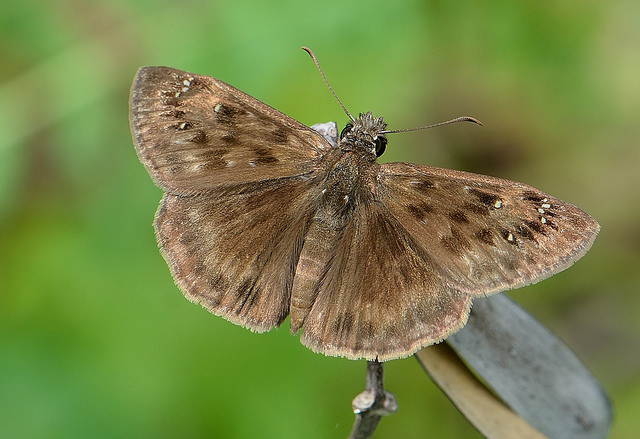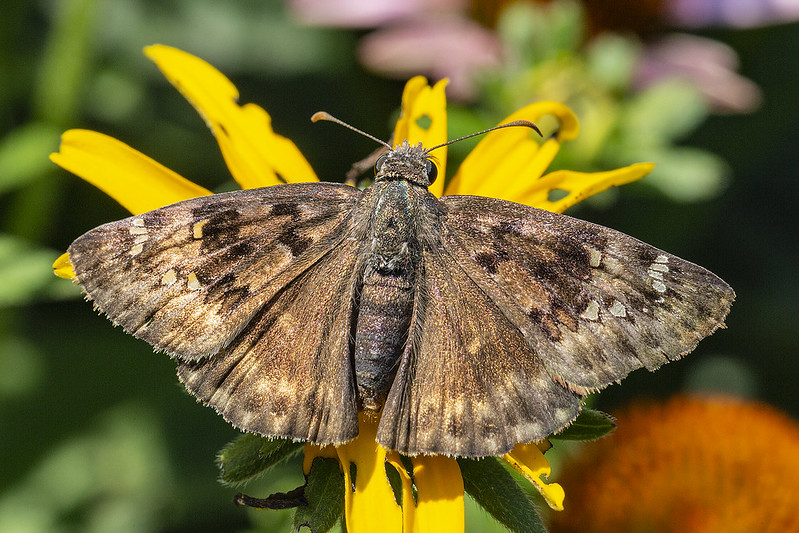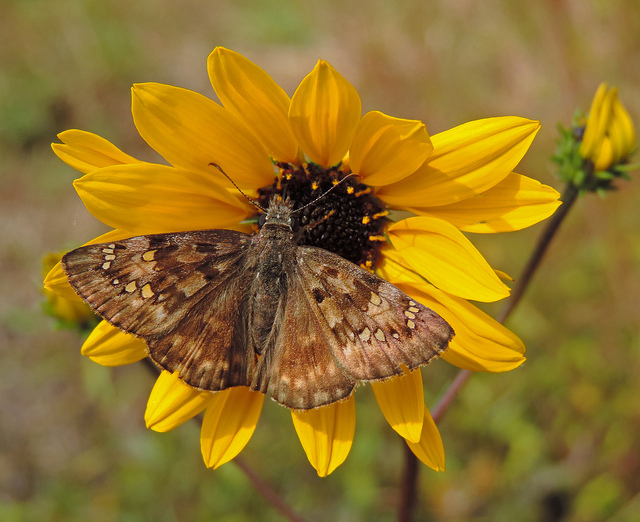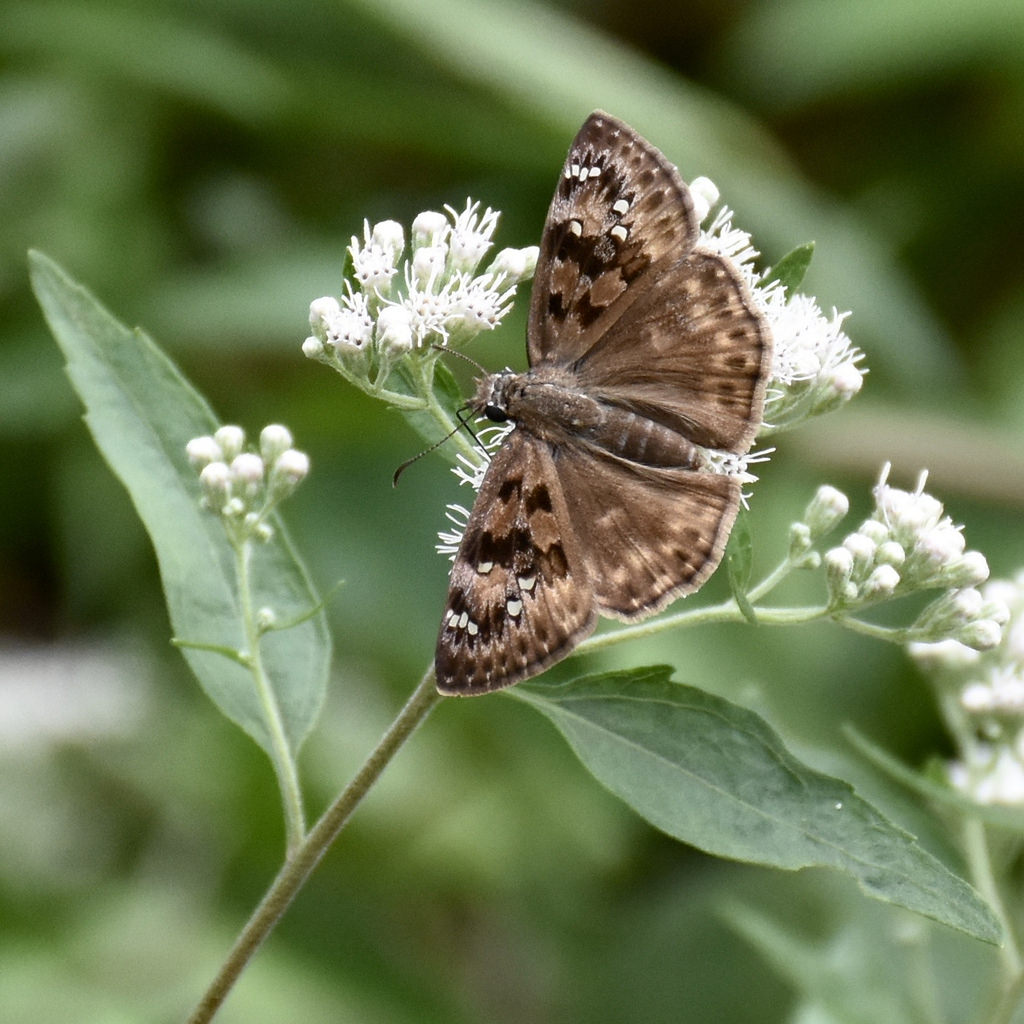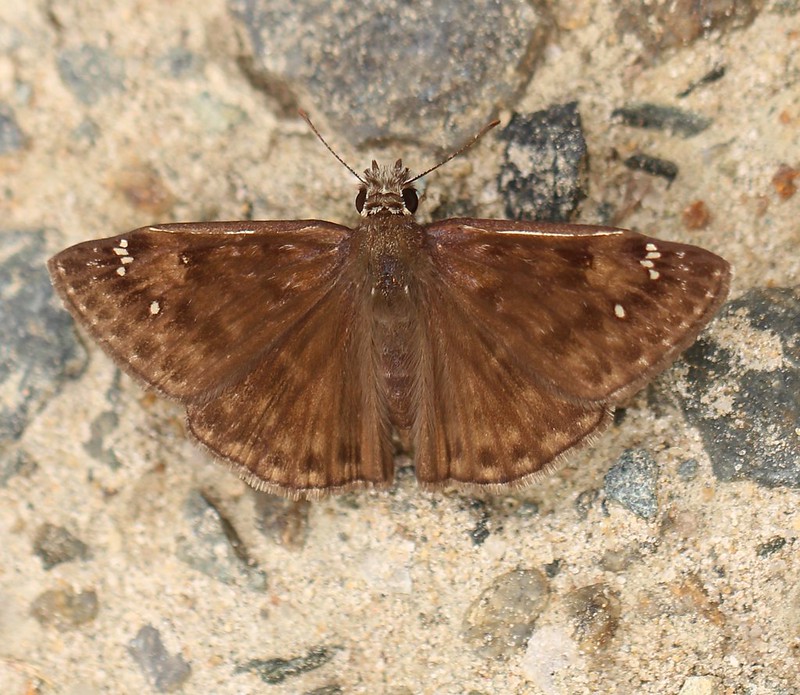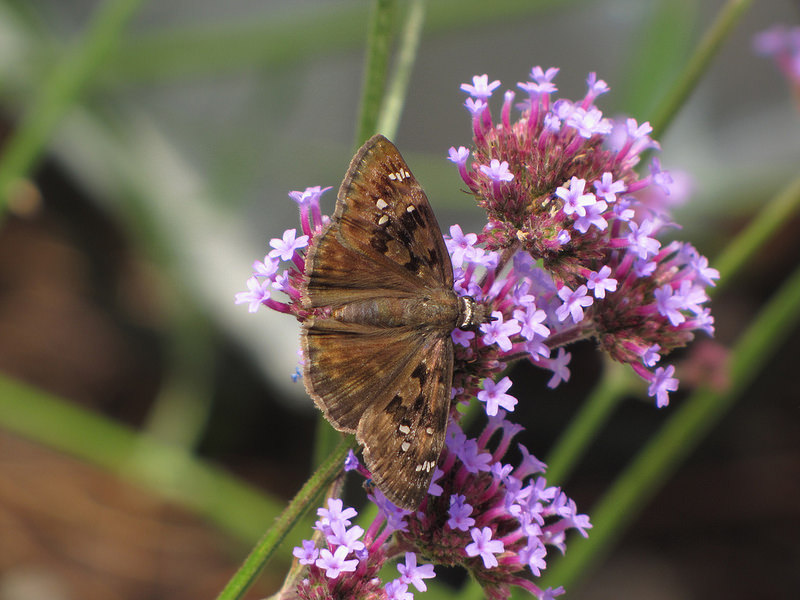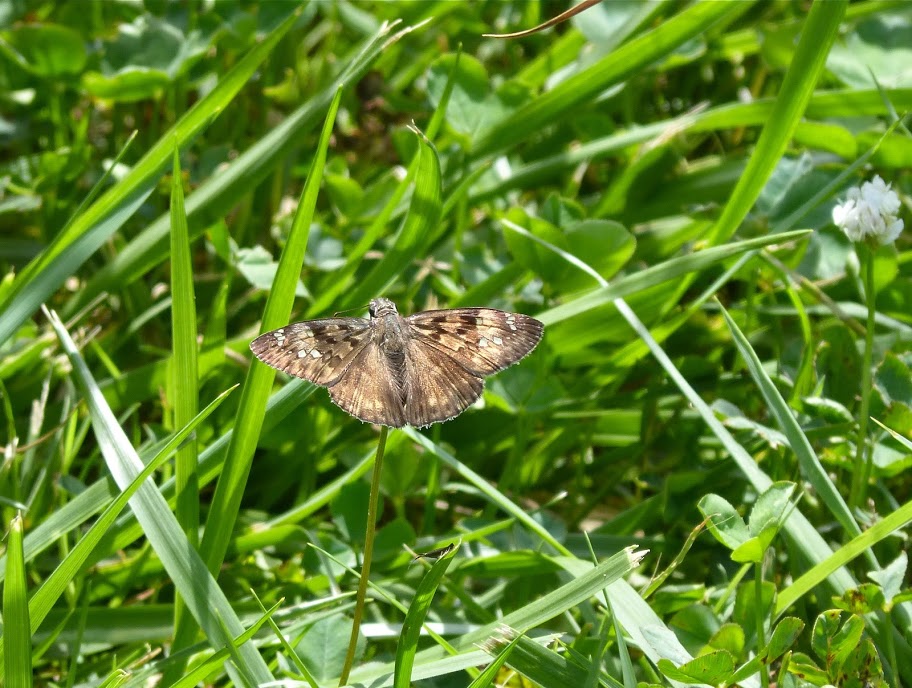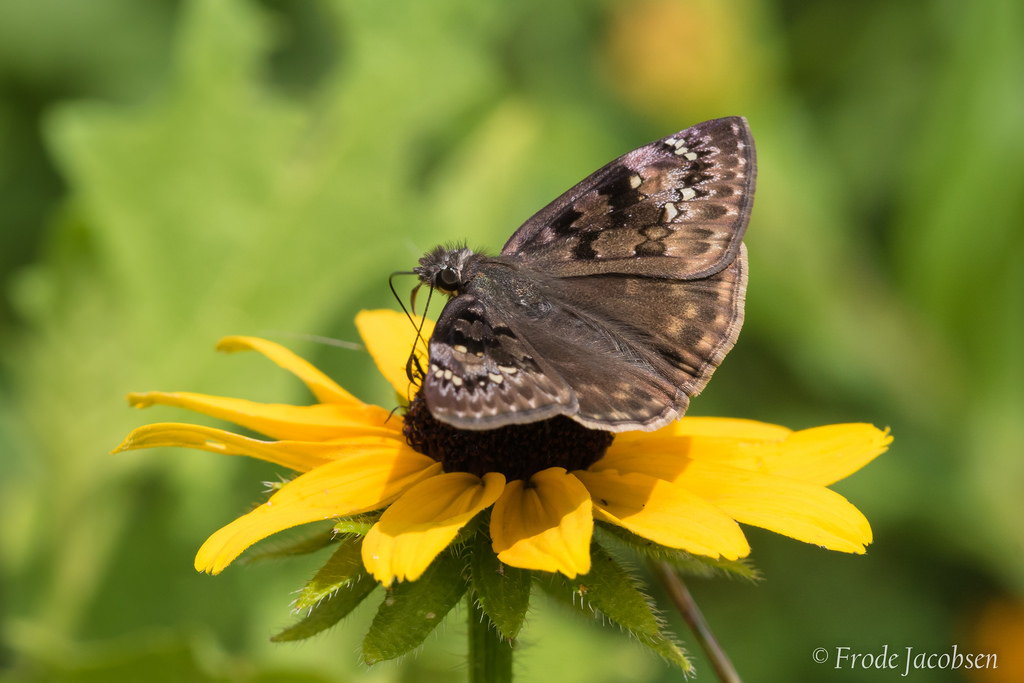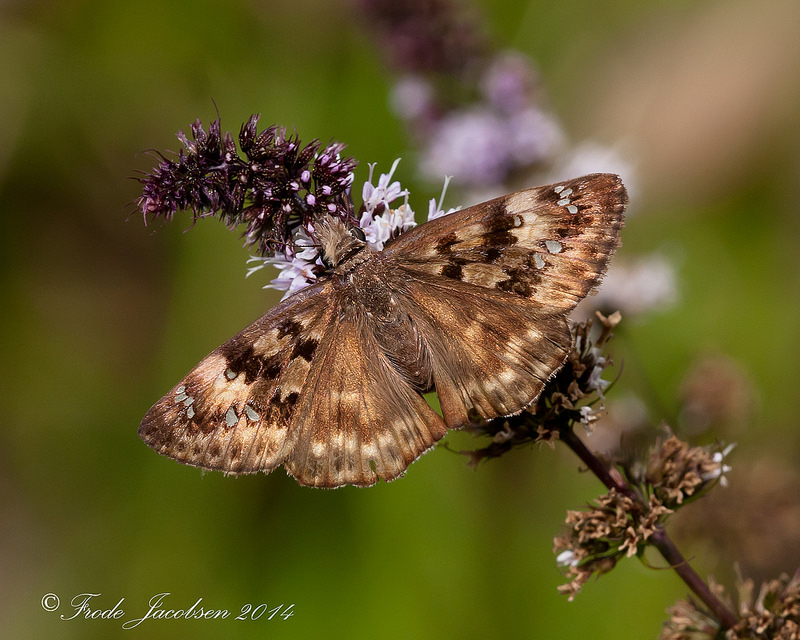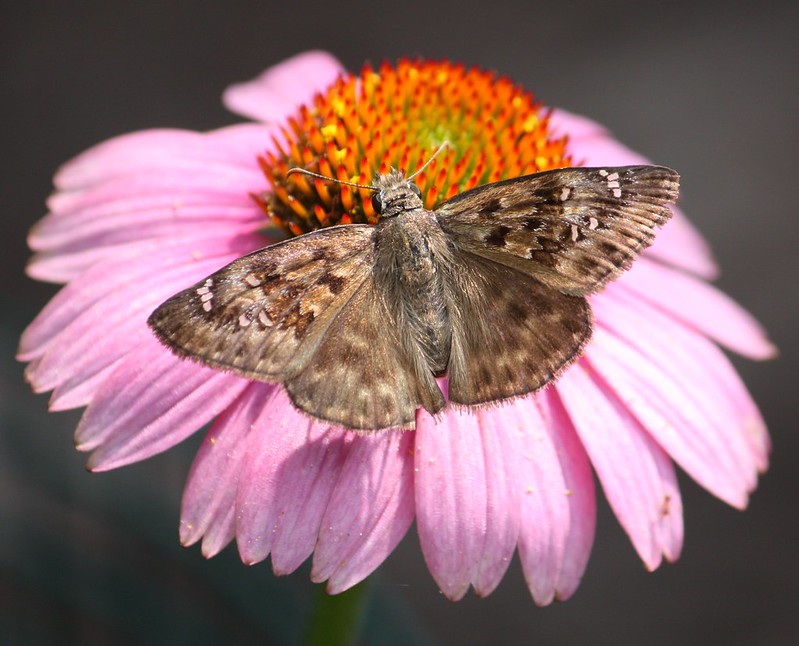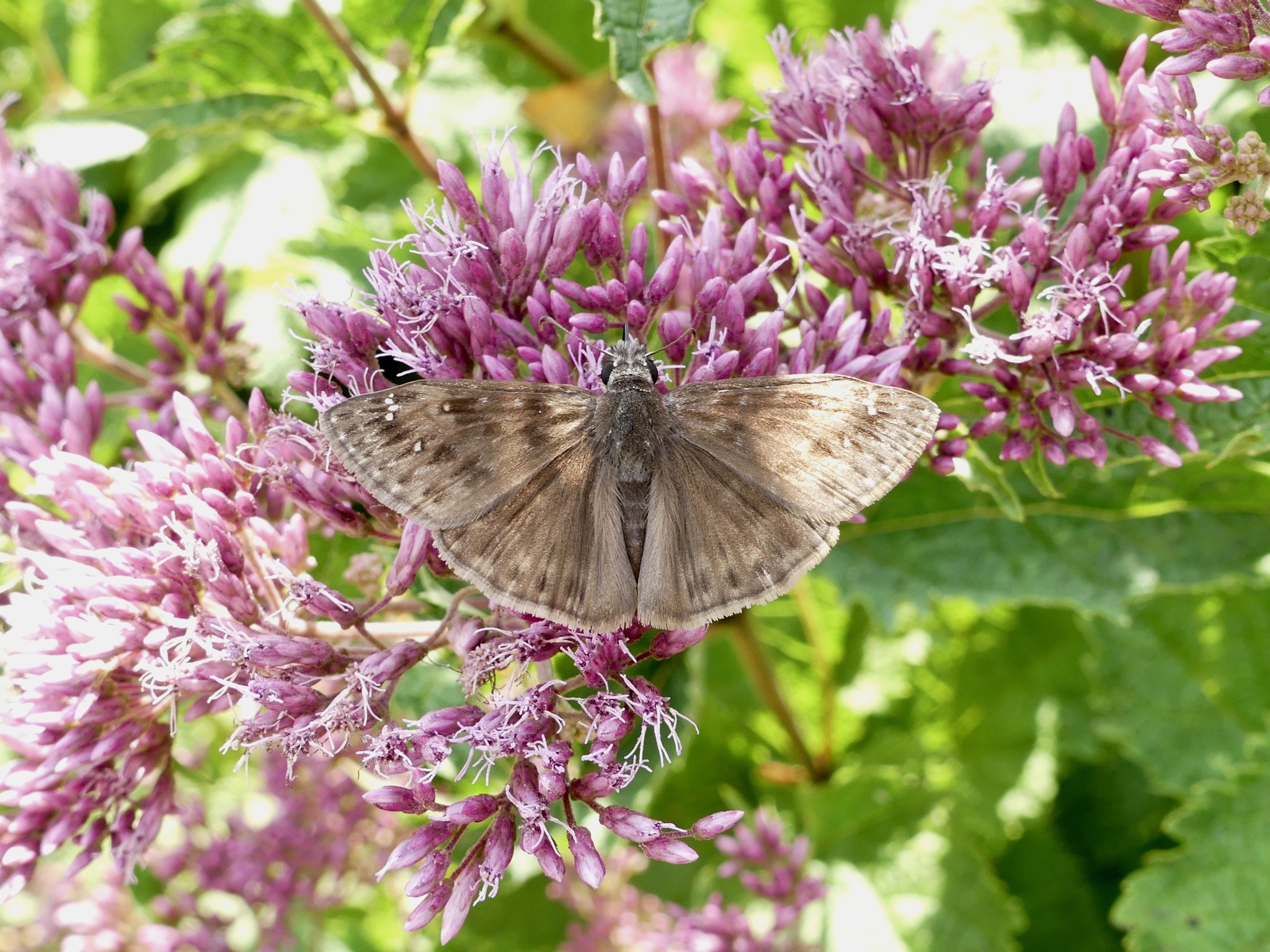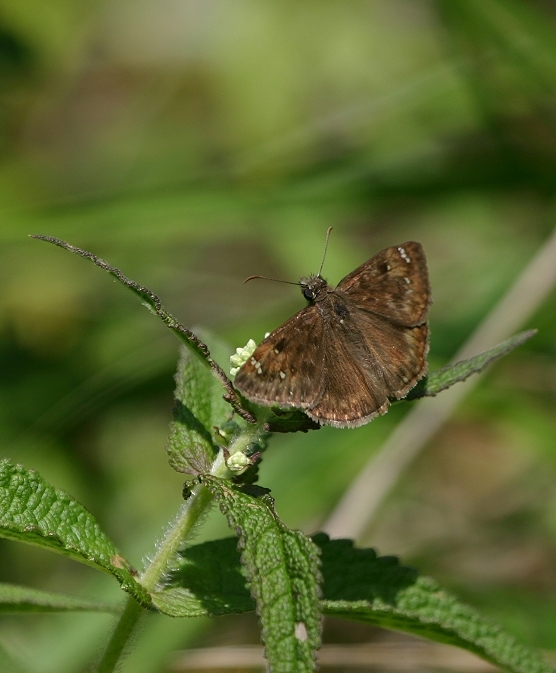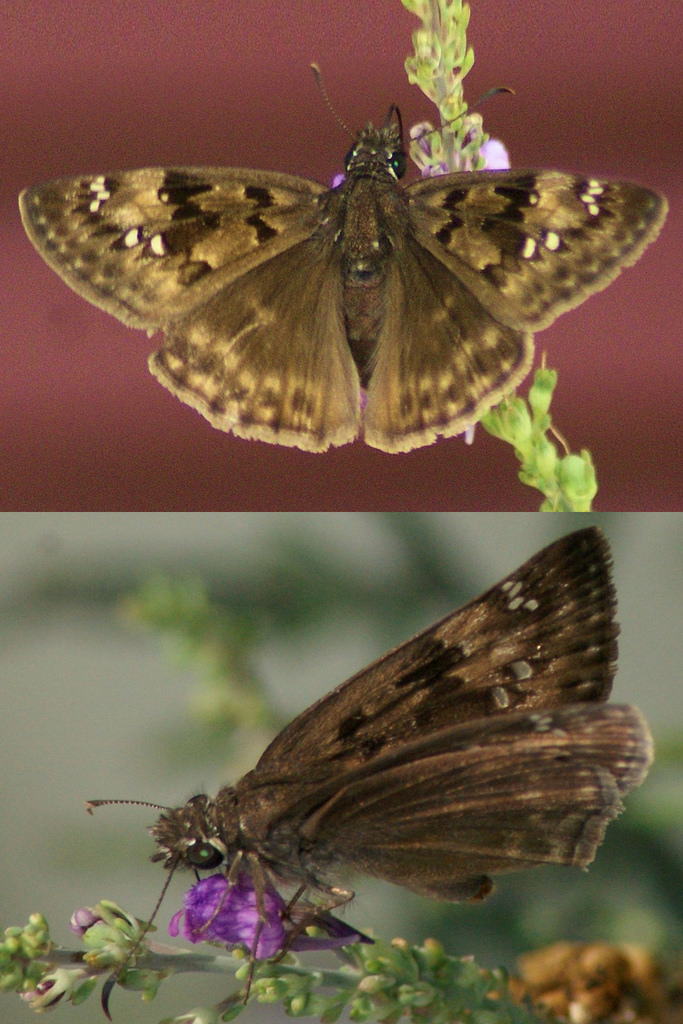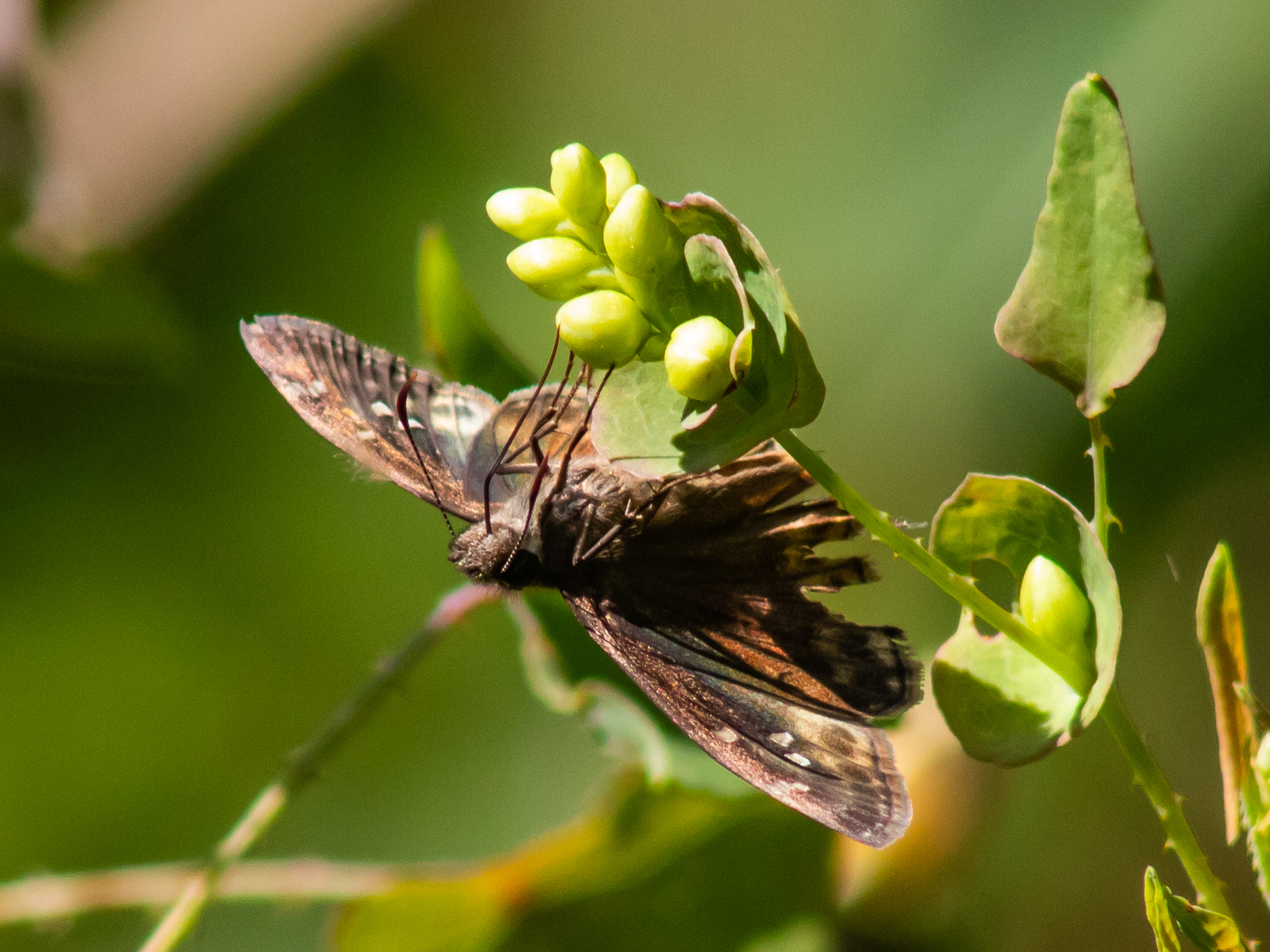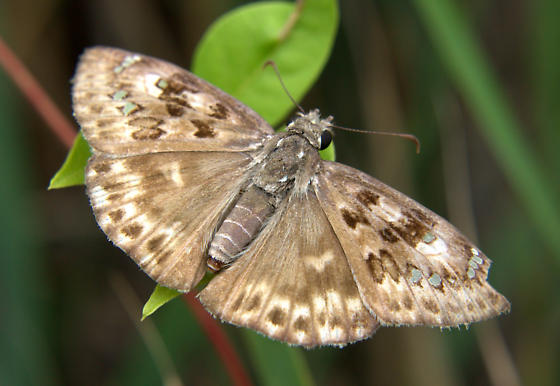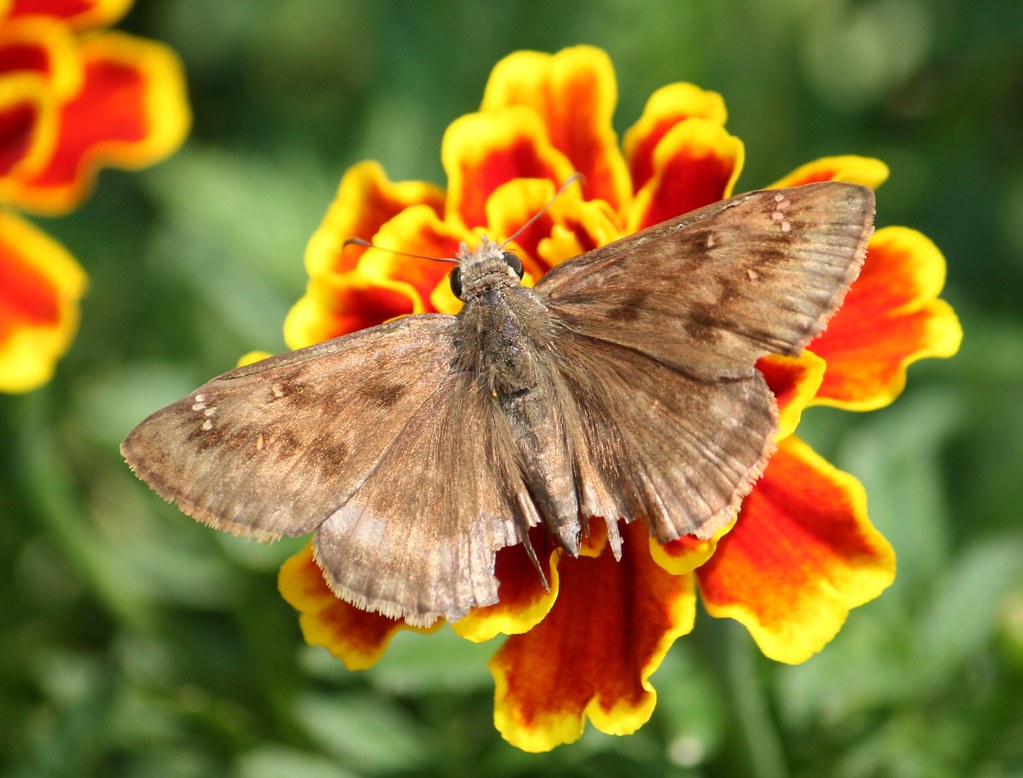Map Snapshot

























528 Records
Relationships
Host plant includes various species of Oaks.
Seasonality Snapshot
Source: Wikipedia
| Horace's duskywing | |
|---|---|

| |
| Female | |

| |
| Male | |
| Scientific classification | |
| Domain: | Eukaryota |
| Kingdom: | Animalia |
| Phylum: | Arthropoda |
| Class: | Insecta |
| Order: | Lepidoptera |
| Family: | Hesperiidae |
| Genus: | Erynnis |
| Species: | E. horatius
|
| Binomial name | |
| Erynnis horatius (Scudder & Burgess, 1870)
| |
| Synonyms | |
|
List
| |
Erynnis horatius, commonly known as Horace's duskywing, is a species of butterfly in the family Hesperiidae. It is found in the United States from Massachusetts to Florida, and west to eastern South Dakota, the Gulf Coast, south-eastern Utah, Colorado, north-eastern Arizona, and New Mexico. It is listed as a species of special concern in the US state of Connecticut.[2]
Fringes are brown. Upperside of male forewing is dark brown with little contrast and no white overscaling. Upperside of female forewing is light brown with a contrasting pattern and large transparent spots. Underside of hindwing is usually without two spots below the apex. The male has a costal fold containing yellow scent scales; the female has a patch of scent scales on the 7th abdominal segment. The wingspan is 36–49 mm.[3]
There are two generations in the north, with adults on the wing from April to September; there are three generations in the deep south and Texas, with adults on the wing from January to November. Adults prefer open woodlands and edges, clearings, fence rows, wooded swamps, power-line right-of-ways, open fields and roadsides.[3]
Caterpillars are hosted by various oak species such as willow oak (Quercus phellos), northern red oak (Q. velutina), scrub oak (Q. ilicifolia), water oak (Q. nigra), post oak (Q. stellata), and live oak (Q. virginiana). Adults consume nectar from flowers up to about 4.5 feet (1.4 m) above ground level, including those of dogbane, buttonbush, sneezeweed, goldenrod, peppermint, boneset, and winter cress.[1][3]
References
[edit]- ^ a b NatureServe (31 May 2024). "Erynnis horatius". NatureServe Network Biodiversity Location Data accessed through NatureServe Explorer. Arlington, Virginia: NatureServe. Retrieved 3 June 2024.
- ^ "Connecticut's Endangered, Threatened and Special Concern Species 2015". State of Connecticut Department of Energy and Environmental Protection Bureau of Natural Resources. Retrieved January 27, 2018.
- ^ a b c "Horace's Duskywing Erynnis horatius (Scudder & Burgess, 1870) | Butterflies and Moths of North America". Retrieved 3 June 2024.
External links
[edit]- Erynnis horatius - Horace's Duskywing, BugGuide
- Erynnis horatius, Butterflies and Moths of North America
- Horace's Duskywing Archived 2011-09-27 at the Wayback Machine, Massachusetts Butterfly Club
- Horace's Duskywing, Butterflies of Canada
